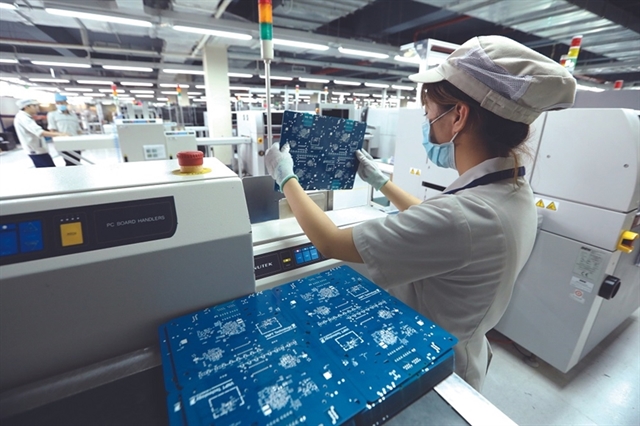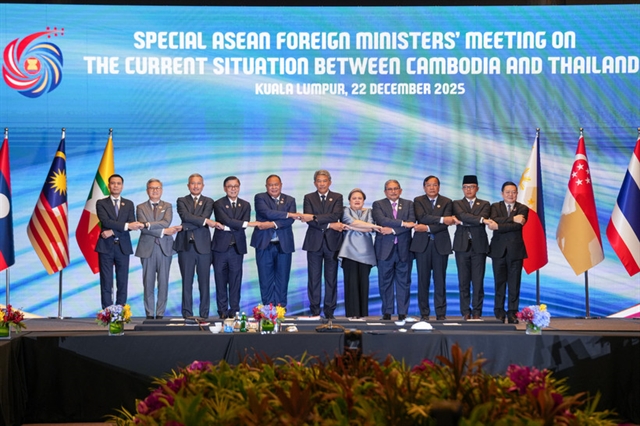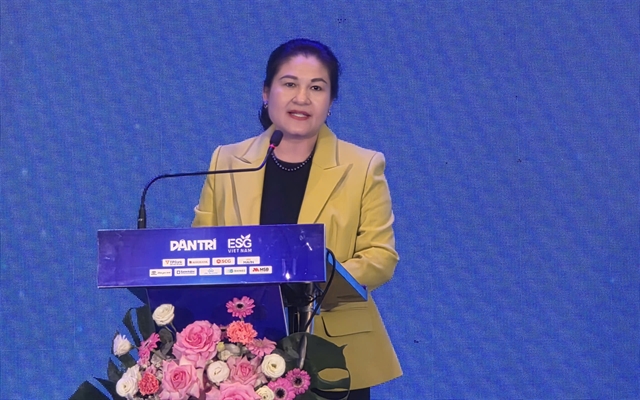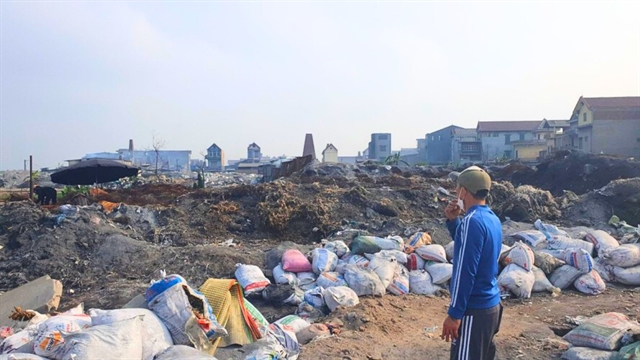 Environment
Environment

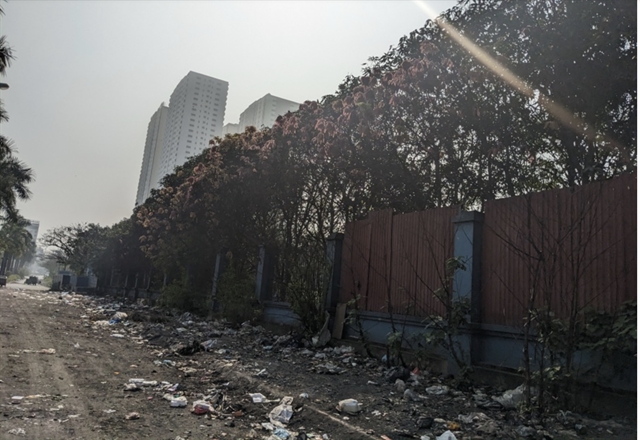 |
| A road in Lai Xá Industrial Zone in Kim Chung Commune of Hà Nội's Hoài Đức District is full of garbage. — Photo kinhtedothi.vn |
HÀ NỘI — Environmental protection in industrial zones and craft villages has long received special attention from Hà Nội authority.
However, environmental pollution still occurs in a number of places throughout the city, especially in suburban areas.
According to Kinh Tế & Đô Thị (Economy and City) Newspaper, the small road connecting National Highway 32 to Lai Xá Industrial Zone in Kim Chung Commune of outlying Hoài Đức District often emits an overwhelming stench with garbage scattered everywhere.
Along another road at the end of the industrial zone there is a black ditch filled with garbage, bordering a vegetable field.
This wastewater in the ditch is stagnant, with no way out. Over time, wastewater from the ditch will penetrate deeply into the soil causing severe environmental pollution.
Lai Xá Industrial Zone is just one of many industrial parks and craft villages in Hà Nội facing the risk of pollution from many different waste sources.
According to statistics, the city currently has about 70 industrial parks located on a total planned area of 1,686ha, and many craft villages in most districts and towns.
The industrial parks and craft villages help promote the growth of the city’s industry and handicrafts, shift the economic structure between industries, and effectively exploit the potential of raw materials as well as create jobs for local labour.
However, the parks and villages bring great concern about environmental pollution.
Referring to the environmental pollution situation in industrial zones and craft villages in Hà Nội in recent years, it is impossible not to mention Dương Liễu craft village of agricultural product processing in Dương Liễu Commune of Hoài Đức District.
The traditional craft brings high income, but local people are facing heavy pollution.
The main cause of the environmental pollution in the village is organic waste generated during the processing of agricultural products, specifically arrowroot vermicelli, rice noodles and cassava starch.
Wastewater from soaking sour cassava for a long time makes most of the canal system in this craft village black and smelly.
There was even a time when Dương Liễu craft village had become a search keyword on the internet for burning canals. The reason was that in the summer time with high temperature, the water in the polluted canals evaporates causing organic waste to become concentrated, and creating gas that could easily ignite when exposed to fire.
To solve the pollution in craft villages, Hà Nội authority has implemented a number of large-scale projects on wastewater treatment for craft villages, including Cầu Ngà Wastewater Treatment Plant which treats wastewater for Dương Liễu Commune.
The plant, with a capacity of treating 20,000cu.m per day, was put into operation in 2016.
However, due to geographical location difficulties, there are still some villages of Dương Liễu Commune that cannot use the services of this plant.
Is the monitoring mechanism effective?
In fact, environmental pollution in industrial zones and craft villages is getting more serious in recent years. Many solutions have been proposed by State management agencies, however, up to now, proposed solutions have not been fully effective for many different reasons. Environmental experts believe that one of the main reasons environmental pollution persists in these areas is because the monitoring mechanism is not effective.
Dr. Đặng Huy Huỳnh, vice president of the Việt Nam Nature and Environment Protection Association, said that the Law on Environment Protection clearly stipulates that the construction of environmental infrastructure must include a wastewater collection, drainage and treatment system, works and equipment for preventing and responding to environment incidents, and non-stop automatic wastewater monitoring system, as well as guarantee green areas.
According to the vice president, the legal corridor in the field of environmental protection has been relatively fully developed.
“All businesses and production facilities in industrial parks and craft villages must comply with these regulations. Before being allowed to operate, environmental protection conditions must be met as stipulated in the Law on Environmental Protection,” said Huỳnh.
“However, there are still a number of production facilities, industrial zones and craft villages that do not comply with those regulations. They illegally discharge into the environment, causing environmental pollution and affecting people’s health," Huỳnh said.
“Hà Nội is developing towards becoming a smart, green, clean and beautiful city. Therefore, in recent years, the municipal People's Committee has paid attention to environment protection, including solutions for environmental pollution in industrial zones and craft villages,” he said.
Although there are legal corridors and policies for environmental protection in industrial zones and craft villages, the weak monitoring mechanism is a major barrier that makes the environmental protection in these areas ineffective, according to Huỳnh.
Therefore, the environmental expert recommended two solutions to improve the effectiveness of environmental protection in the areas.
The first is to strengthen information dissemination and raise awareness of environmental protection among owners of businesses, production facilities and people. The effort aims to help everyone understand that protecting the environment is protecting one's own life.
The second is to improve the effectiveness of monitoring and handling violations in the environmental field. Authorities and State management agencies need to be more decisive.
Besides, it is necessary to give local mass organisations such as the association of elderly, women and youth, and the Fatherland Front the right to supervise and raise their voices on solutions for pollution prevention and preserving the environment. VNS

